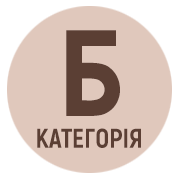DIDACTIC ASPECTS OF TEACHING “CONTRASTIVE TYPOLOGY OF THE ENGLISH AND UKRAINIAN LANGUAGES” FOR PROSPECTIVE TEACHERS-PHILOLOGISTS
DOI:
https://doi.org/10.32782/2412-9208-2025-2-37-47Keywords:
prospective English teachers, professional training, contrastive typology of English and Ukrainian, system of activities, program learning outcomesAbstract
The article reveals didactic aspects of organizing students’ activity within the framework of the discipline «Contrastive Typology of the English and Ukrainian Languages». The material of the course is considered from the point of view of prospective English teacher training. It is emphasized that understanding the isomorphic regularities and allomorphic singularities of English and Ukrainian is an important prerequisite for the development of teacher-philologist’s professional competencies, in particular the ability to intentionally use the positive transfer of linguistic knowledge from Ukrainian to English; to analyze, explain and overcome the interference effect of the native (Ukrainian) language; to predict typical errors of pupils/students and to effectively adapt educational materials. A logical deduction is made about the necessity to adapt the didactic content of the discipline to the needs of prospective English teacher professional training. The emphasis is on the integration of theoretical knowledge with practical skills realized in suggested activities and work formats as it ensures the preparation of prospective teachers-philologists for real challenges in their future professional activities. The author’s vision of realizing the educational potential of the discipline is given: the focus is on the seminar-workshop as the leading form of acquiring knowledge and developing skills within the framework of the discipline; the author’s tasks are offered and a deduction is made regarding their implementation within the seminar-workshop in the format of professional discussions, work in small groups, and brainstorming, which contributes to both a deeper understanding of the isomorphic and allomorphic features of the English and Ukrainian languages, as well as their interpretation and use in a professional context. The survey results indicate a positive didactic and professionally oriented potential of the suggested tasks, which effectively combine linguistic knowledge with practical components of professional teaching activity, contributing to the integrated development of prospective English teachers’ professional competencies.
References
Корунець І. В. Порівняльна типологія англійської та української мов : навч. посіб. Вінниця : «Нова книга», 2004. 464 с.
Робоча програма з навчальної дисципліни «Порівняльна типологія англійської та української мов» для здобувачів вищої освіти за другим (магістерським) рівнем ОПП «Середня освіта (Англійська мова і зарубіжна література)». [упоряд.: Лук’янченко І. О.]. Одеса : Університет Ушинського, 2024. 23 с.
Фрасинюк Н. Порівняльна типологія англійської та української мов : тези лекцій, завдання для семінарських занять, завдання для самостійної роботи, тестові завдання : навч.-метод. посіб. Кам’янець-Подільський : Друкарня «Рута», 2020. 156 с.
Filipovic L. Applying typological insights in professional practice. Language in contrast. 2017. Vol. 1. P. 255–278. URL : https://doi.org/10.1075/lic.17.2.05fil
Fisiak J. (ed.) Contrastive linguistics: Prospects and problems. Reprint ed. Berlin : De Gruyter Mouton, 2011. 459 p. (Trends in Linguistics. Studies and Monographs [TiLSM]. Vol. 22).
Lado R. Linguistics Across Cultures: Applied Linguistics for Language Teachers. Reprint ed. Ann Arbor: The University of Michigan Press, 1966. 141 p.
Ringbom H., Jarvis S. The Importance of Cross-Linguistic Similarity. Foreign Language Learning, in The Handbook of Language Teaching (eds M. H. Long and C. J. Doughty). Oxford : Wiley-Blackwell, 2009. P. 106–118.







